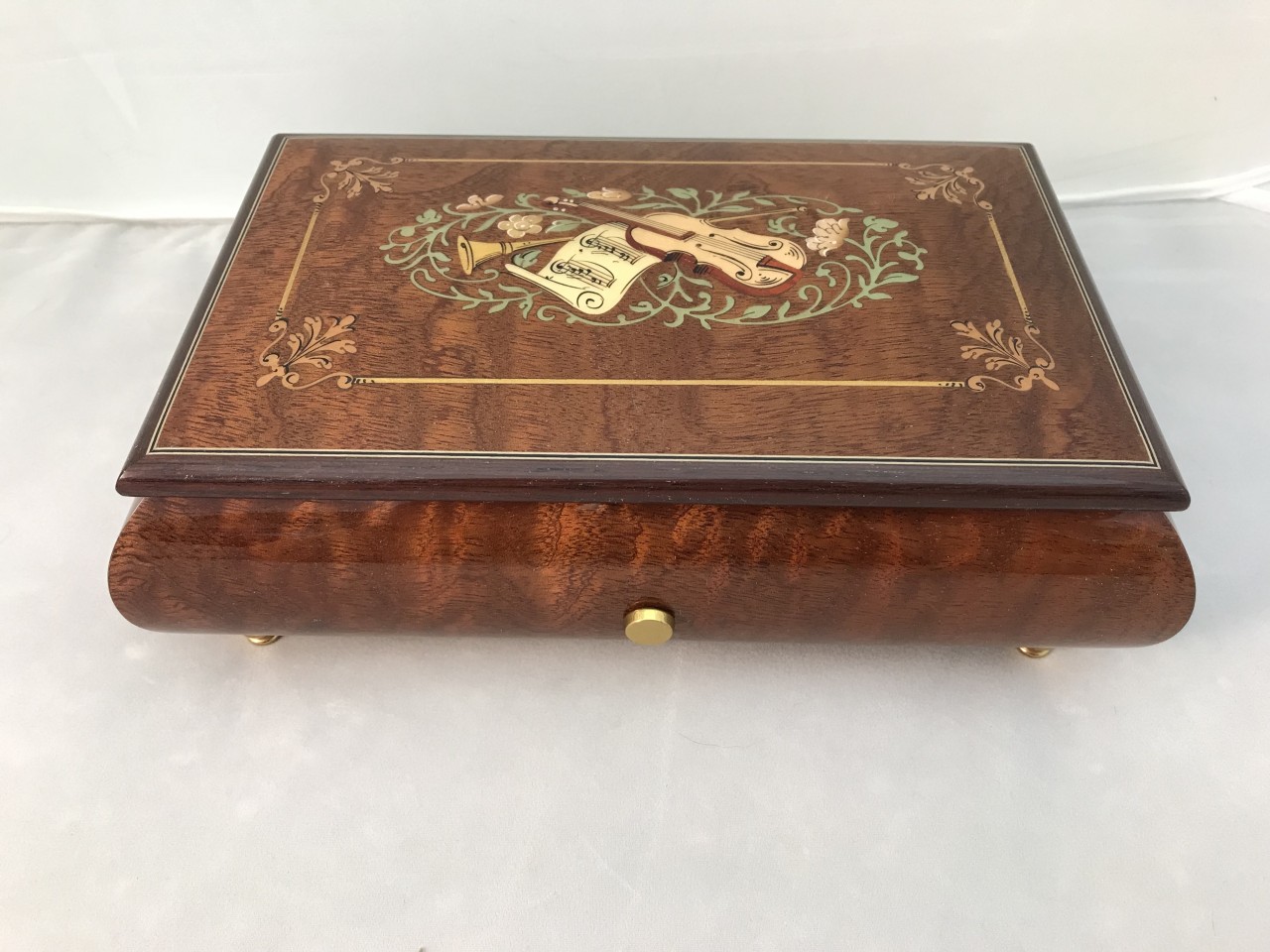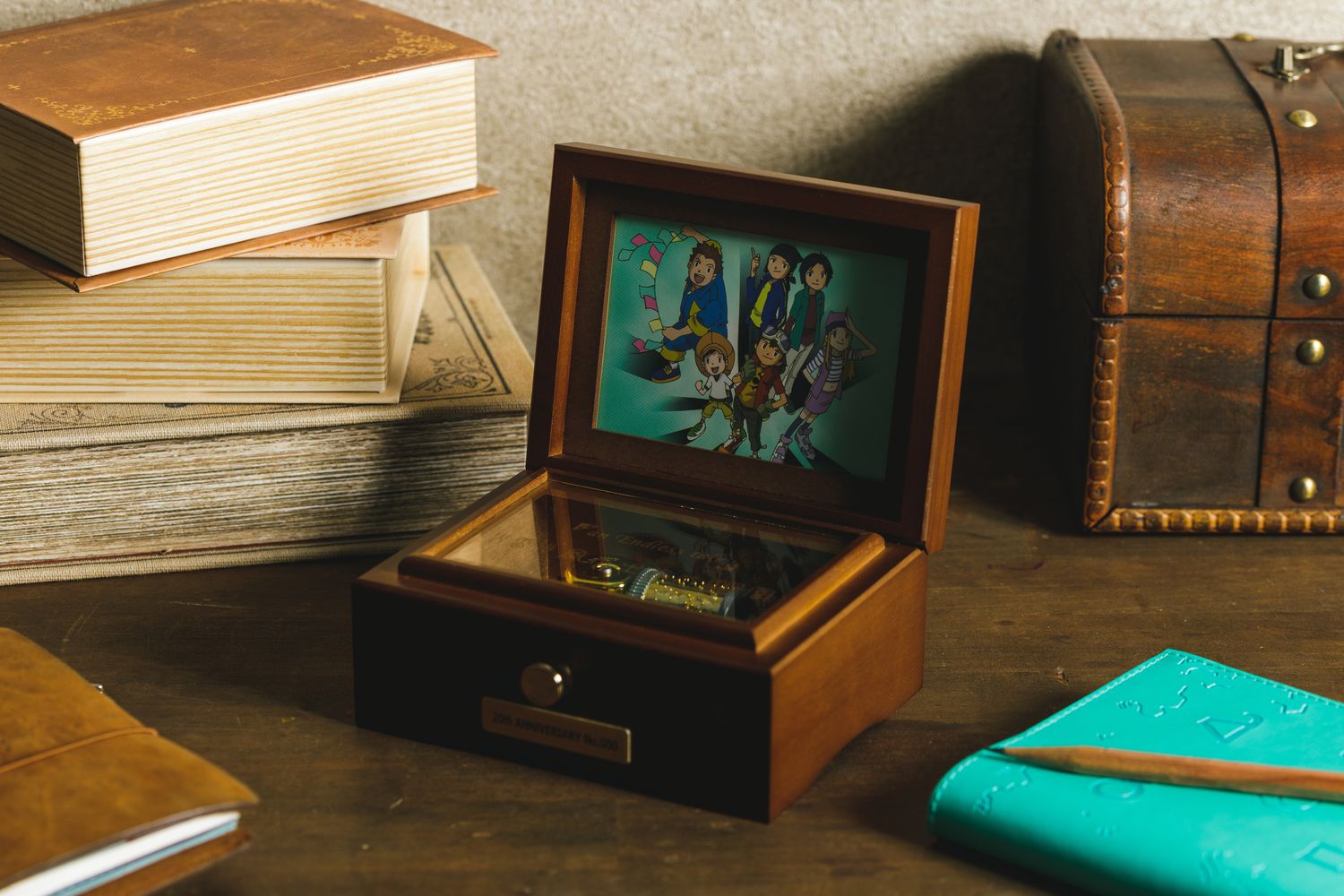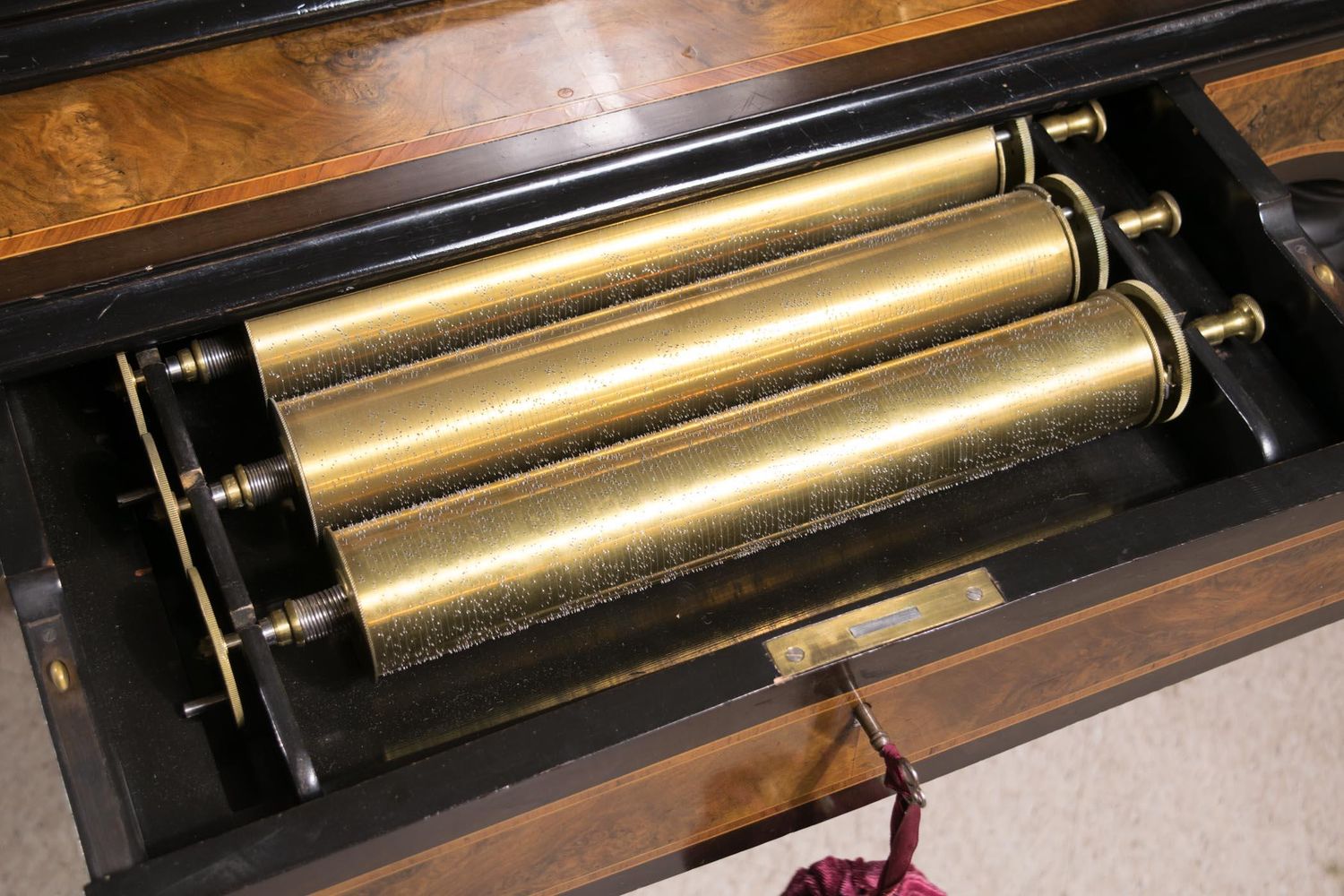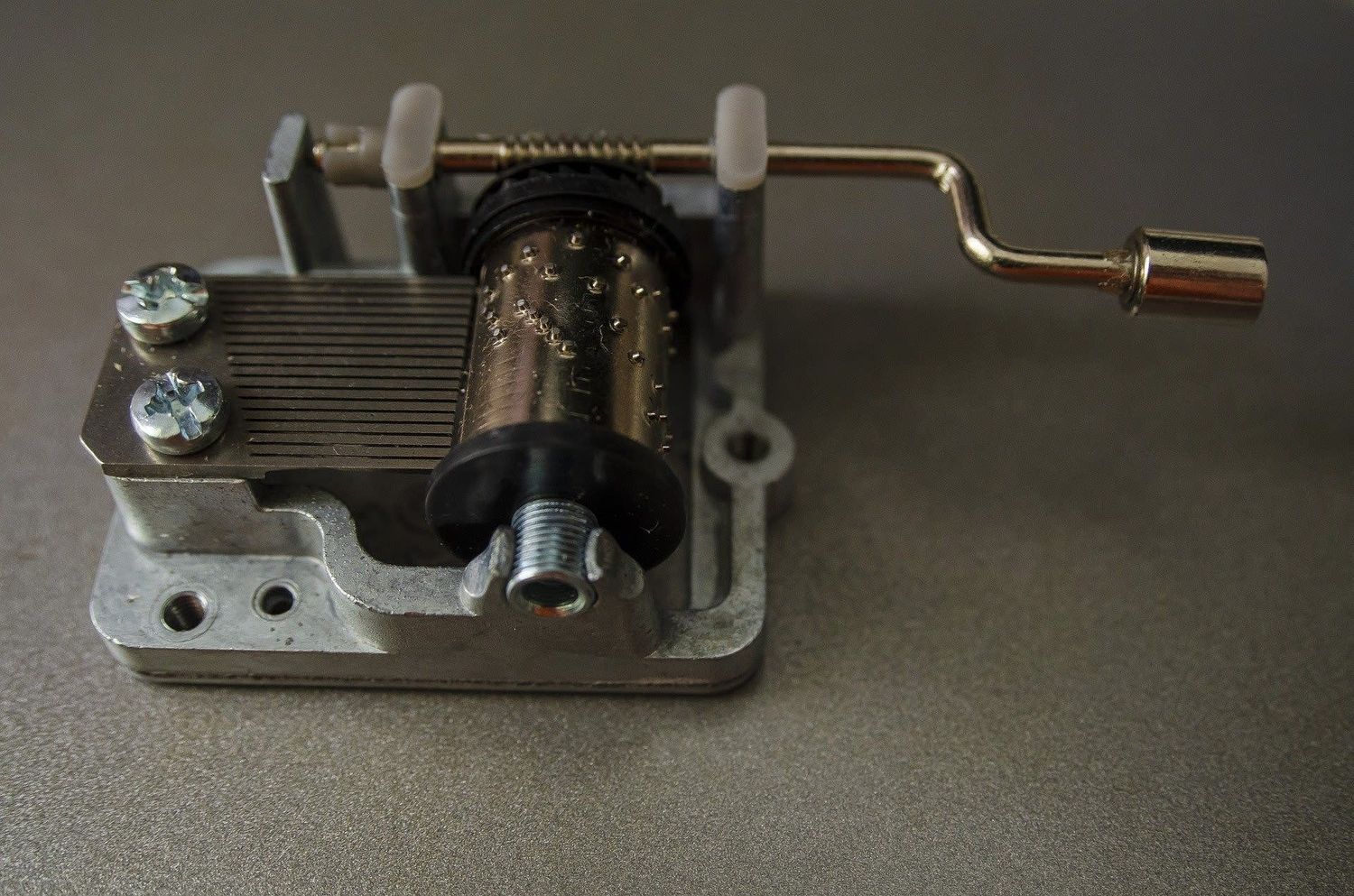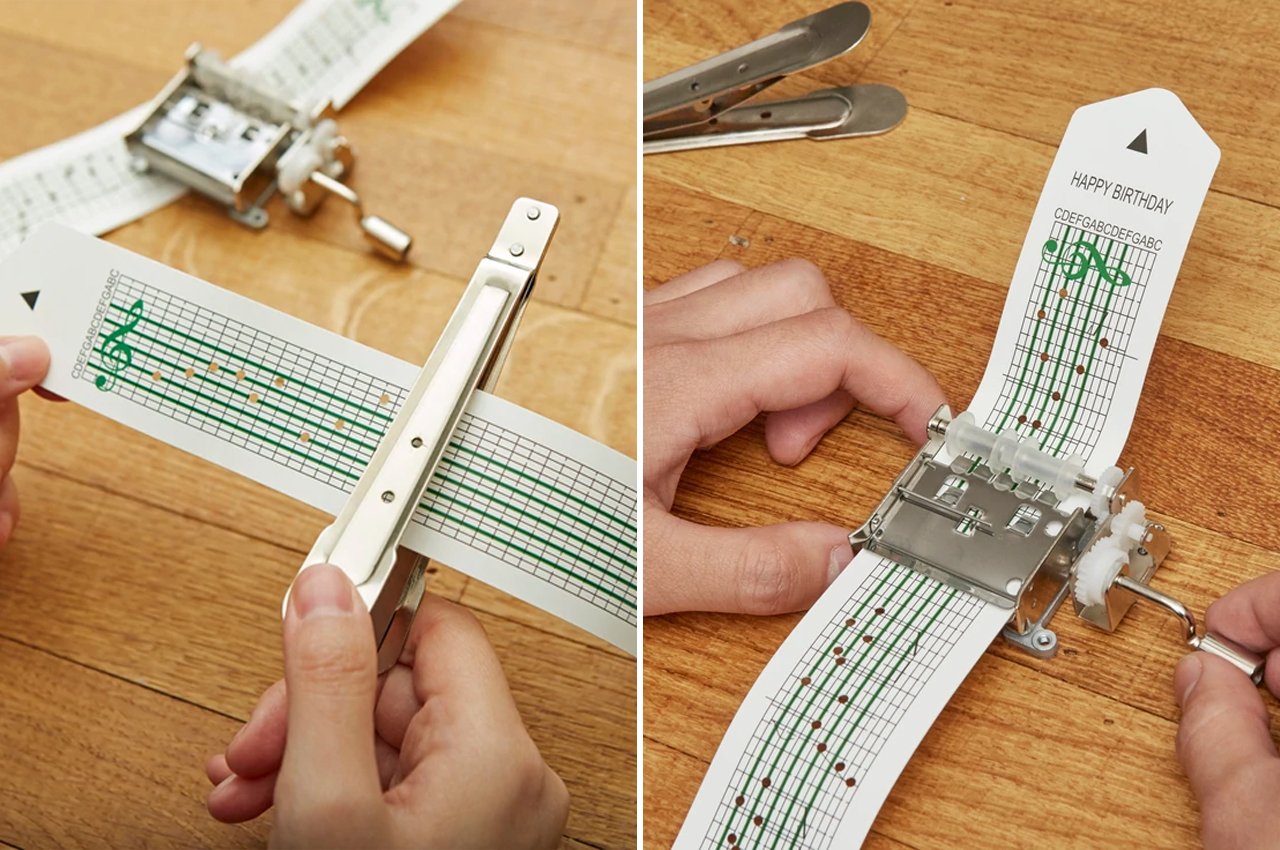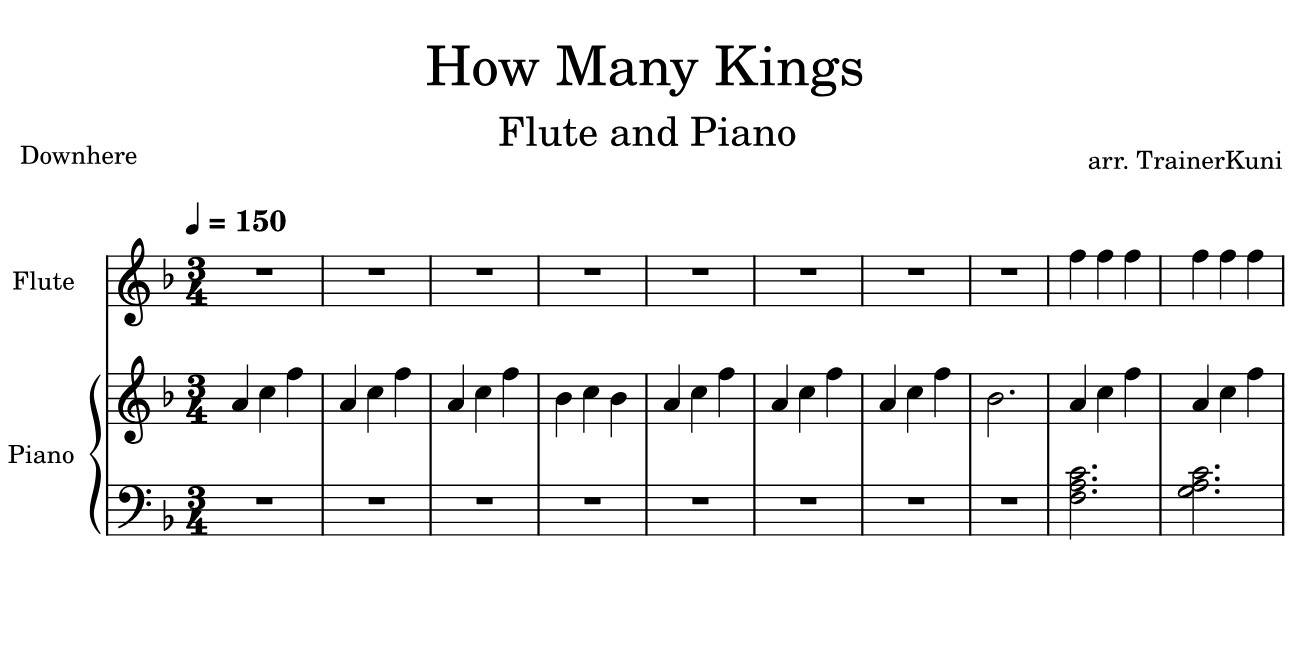Home>Devices & Equipment>Music Box>How Many Teeth In Music Box


Music Box
How Many Teeth In Music Box
Modified: January 22, 2024
Discover the enchanting melodies of a music box. Learn how many teeth are in a music box and explore the inner workings of this mesmerizing instrument.
(Many of the links in this article redirect to a specific reviewed product. Your purchase of these products through affiliate links helps to generate commission for AudioLover.com, at no extra cost. Learn more)
Table of Contents
Introduction
Music boxes have fascinated people for centuries with their delicate melodies and charming aesthetics. These intricate instruments, also known as musical snuff boxes or cylinder boxes, have a rich history dating back to the 18th century. Featuring a mechanical mechanism that produces beautiful sounds, a music box captivates its listeners and transports them into a world of melodic enchantment.
The allure of music boxes lies not only in their soothing melodies but also in their exquisite craftsmanship. With their carefully crafted cases and intricate internal mechanisms, music boxes are a testament to the artistry and ingenuity of skilled craftsmen. From their humble beginnings as simple toys to the elaborately designed and intricately decorated creations of today, music boxes continue to captivate people of all ages.
In this article, we will delve into the fascinating world of music boxes and explore the role of teeth in producing their melodious tunes. We will uncover the history behind these mesmerizing instruments, how they are constructed, the function of teeth in music boxes, the different types of teeth, and the factors that determine the number of teeth in a music box.
Whether you are a seasoned collector, a music enthusiast, or simply curious about the inner workings of music boxes, join us on this musical journey as we unravel the secrets of these enchanting instruments.
History of Music Boxes
The origins of music boxes can be traced back to the late 18th century in Switzerland, a country renowned for its precision mechanics. Originally, these boxes were small, handheld instruments that played simple tunes using a cylindrical metal barrel embedded with small pins.
The concept of the music box was inspired by the barrel organ, a popular instrument during that time. However, instead of using a large barrel, music box makers began experimenting with smaller, more portable mechanisms that could fit inside a compact box.
As the demand for these musical novelties grew, Swiss craftsmen developed innovative techniques to create more complex and elaborate music boxes. They incorporated additional cylinders with different pin configurations, enabling multiple melodies to be played. The melodies could be changed by sliding the cylinder or by swapping it with another one.
The popularity of music boxes spread throughout Europe, becoming a cherished and coveted item among the aristocracy and upper classes. As demand increased, music box manufacturers began experimenting with different materials for the cases, including precious woods, ivory, and even porcelain, often adorned with intricate inlays and hand-painted designs.
By the 19th century, the music box industry had flourished, and production expanded beyond Switzerland to Germany, France, and other European countries. The delicate craftsmanship and melodious tunes of these boxes made them highly sought-after collectibles and gifts that were passed down through generations.
Over time, advancements in technology allowed for more varied and complex music box designs. Musical cylinders were replaced with thin metal discs embedded with pins, increasing the range of melodies that could be played. Clockwork mechanisms and interchangeable cylinders or discs made it easier to customize the music played by the box.
In the 20th century, the advent of electronic music reduced the demand for traditional music boxes. However, the charm and nostalgia associated with these mechanical marvels have ensured their enduring popularity among collectors, enthusiasts, and music lovers.
Today, music boxes continue to be crafted by skilled artisans, preserving the tradition and craftsmanship of this exquisite art form. They serve as a testament to the ingenuity and beauty of mechanical instruments that have captured the hearts of people for centuries.
Construction of Music Boxes
The construction of a music box involves a combination of skilled craftsmanship and precise mechanical engineering. Each music box is composed of several key components that work together to produce its enchanting melodies.
The outer casing of a music box is typically made from wood, metal, or a combination of both. It serves both as a protective cover for the delicate mechanisms inside and as an aesthetically pleasing design element. The casing may be adorned with intricate carvings, inlays, or painted designs to add a touch of elegance and beauty.
Inside the casing, the heart of the music box lies – the mechanical movement. This movement consists of a series of gears, levers, and springs that work harmoniously to create the music. The movement is usually mounted on a metal plate, ensuring stability and precise alignment.
The most crucial component of the mechanical movement is the cylinder or disc. In traditional music boxes, a cylindrical metal barrel with pins was used to produce the melodies. The pins would pluck the comb, a series of tuned metal teeth, as the cylinder rotated. In modern music boxes, metal discs with precisely placed pins are used instead of cylinders. These discs can be easily interchanged to play different melodies.
The comb, made from high-quality steel or brass, is an essential part of the music box’s mechanism. It consists of a series of carefully tuned metal teeth of varying lengths. Each tooth produces a specific note when struck by a pin on the cylinder or disc. The number and arrangement of teeth determine the range of melodies that can be played.
When the cylinder or disc rotates, the pins engage with the teeth of the comb, causing them to vibrate and produce musical notes. The pins determine which teeth are activated, creating a sequence of melodies. The vibrations of the teeth resonate through the soundboard, amplifying the sound and producing the characteristic melodic tones.
To control the speed and tension of the movement, a regulator is incorporated into the music box. The regulator allows for adjustments in the tempo and volume of the music, ensuring the desired sound quality.
The music box might also feature other decorative elements such as a glass cover to showcase the movement, a winding key to power the mechanism, and a start/stop lever to control the playback.
With intricate and precise construction, music boxes are true works of art that can be cherished and appreciated both for their visual appeal and the captivating melodies they produce.
How Teeth Function in Music Boxes
The teeth in a music box play a crucial role in producing the melodic tunes that delight our ears. These small, carefully tuned metal pieces are what create the individual notes and melodies that make up a music box’s song.
When the cylinder or disc of a music box rotates, the pins positioned on its surface come into contact with the teeth on the comb. The length and positioning of the teeth correspond to specific musical notes. As a pin brushes against a tooth, it causes the tooth to vibrate, creating a distinct sound.
Each tooth on the comb is precisely tuned to produce a specific pitch, allowing the music box to play a melody with a range of notes. The arrangement of the teeth determines the order in which the notes are played, resulting in the recognizable tune of a song.
As the pins interact with the teeth, the vibrations produced resonate through the soundboard of the music box. The soundboard acts as an amplifier, enhancing the volume and quality of the notes. This resonance is what gives music boxes their distinct and charming sound.
The length and thickness of the teeth determine the pitch of the notes they produce. Longer teeth create lower pitches, while shorter teeth produce higher pitches. Skilled craftsmen meticulously tune each tooth, ensuring that it produces the correct pitch and harmonizes with the rest of the comb’s teeth.
Furthermore, the spacing between the teeth determines the rhythm and timing of the music. By adjusting the distance between the teeth, craftsmen can create different rhythms, allowing for variations in tempo and musical expression.
It is important to note that the teeth on a music box comb are delicate and need to be properly cared for. Over time, the teeth may wear down or become misaligned, affecting the sound quality. Regular maintenance and adjustments by experienced technicians can help preserve the integrity of the teeth and ensure that the music box continues to produce enchanting melodies for years to come.
In summary, the teeth in a music box are precisely tuned metal pieces that produce specific pitches when struck by the pins on the cylinder or disc. Their arrangement and spacing determine the melody, rhythm, and timing of the music, creating the signature sound that captivates listeners and brings joy to our hearts.
Types of Music Box Teeth
Music box teeth come in various shapes and styles, each influencing the sound and capabilities of the instrument. From simple straight-edge teeth to more intricate designs, these variations add depth and character to the melodies produced by the music boxes.
One of the most common types of teeth found in music boxes is the straight-edge or flat teeth. These teeth have a uniform shape and produce a clear, pure tone when struck by the pins on the cylinder or disc. The simplicity of these teeth allows for a wide range of melodies and ensures a consistent sound quality.
Another type of music box teeth is the pointed teeth, also known as spear-shaped or stylized teeth. These teeth have a tapered shape, resembling little spears or arrows. The pointed design adds a touch of complexity to the sound, creating a slightly brighter and crisper tone. Music boxes with pointed teeth are often valued for their distinct and lively melodies.
Curved teeth are another variation commonly found in music boxes. These teeth have a gentle curve that allows for a more nuanced and expressive sound. The curved shape impacts the way the pins strike the teeth, creating subtle variations in volume and timbre. Music boxes with curved teeth produce melodies that are rich in tonal variation and can evoke a sense of elegance and sophistication.
In addition to straight-edge, pointed, and curved teeth, some music boxes feature specialty teeth, such as hand-tuned or tuned-to-fit teeth. These teeth are carefully crafted and individually adjusted to ensure precise pitch and harmonization. Hand-tuned teeth require meticulous craftsmanship and are often found in high-end or custom-made music boxes.
Furthermore, some music boxes may incorporate hybrid teeth, which combine elements from different tooth types. These hybrid designs offer a unique blend of characteristics, allowing for even more diverse and captivating melodies.
It is worth noting that the type of teeth used in a music box greatly influences its sound and musical capabilities. Each tooth design contributes to the overall tonal qualities, allowing for a wide range of melodies and expression. The choice of tooth type is often a matter of personal preference, with different individuals drawn to different styles based on their desired sound and aesthetic appeal.
Whether it is the simplicity of straight-edge teeth, the liveliness of pointed teeth, the refinement of curved teeth, or the precision of hand-tuned teeth, each variation adds its own unique charm to the enchanting melodies produced by music boxes.
Number of Teeth in Different Types of Music Boxes
The number of teeth in a music box is one of the defining factors that determines its musical range and capabilities. The number of teeth varies depending on the type of music box, with different designs accommodating different numbers of teeth.
In traditional hand-cranked music boxes, the number of teeth generally ranges from 10 to 30. These smaller music boxes typically play simple melodies and nursery rhymes, requiring fewer teeth to produce the desired range of notes. The limited number of teeth in these music boxes contributes to their charming and delicate sound.
As music boxes become larger and more complex, the number of teeth increases. Intermediate size music boxes may have anywhere between 30 to 50 teeth, allowing for more intricate melodies and a wider range of musical expression.
Large music boxes, often featuring multiple cylinders or interchangeable discs, can have over 100 teeth or even more. These music boxes are capable of playing complex compositions with intricate harmonies and melodies. The higher number of teeth provides a greater musical range, enabling these music boxes to recreate orchestral compositions or popular tunes with remarkable accuracy.
Additionally, the arrangement of the teeth also affects the musical capabilities of a music box. In some cases, the teeth may be arranged in a single row, while in others, they may be arranged in multiple rows or spirals. Each arrangement allows for different musical complexities and arrangements, providing unique sound possibilities.
It’s important to note that while the number of teeth in a music box impacts its range and melodic capabilities, the craftsmanship and precision of the teeth are equally critical. Skilled artisans meticulously tune each tooth to ensure precise pitch and harmonization, regardless of the total number of teeth.
When choosing a music box, consider the number of teeth and the desired musical range you prefer. A smaller music box with fewer teeth may be perfect for simple, nostalgic melodies, while a larger music box with more teeth might be preferred for more elaborate and intricate compositions.
Ultimately, the number of teeth in a music box plays a significant role in determining its musical possibilities and the enjoyment it brings to listeners. Whether big or small, the melodies produced by music boxes are sure to captivate and delight all those who have the pleasure of experiencing them.
Factors Influencing the Number of Teeth in a Music Box
The number of teeth in a music box is influenced by various factors, which determine the musical capabilities and range of the instrument. These factors can vary depending on the design, purpose, and desired musical output of the music box.
1. Musical Range and Complexity: One of the primary factors that influence the number of teeth is the desired musical range and complexity of the music box. Smaller music boxes with simpler melodies may require fewer teeth to produce the desired range of notes. On the other hand, larger music boxes intended to play more complex compositions may have a higher number of teeth to accommodate a wider range of musical expression.
2. Genre and Style: The genre and style of music that the music box is intended to play can impact the number of teeth. Different musical genres may have varying melodic complexities and requirements, which may necessitate a specific number of teeth to accurately reproduce the desired sound.
3. Size and Space Constraints: The physical size of the music box can influence the number of teeth it can accommodate. Smaller music boxes may have limited space within the mechanism, allowing for a smaller number of teeth. Conversely, larger music boxes provide more room for additional teeth, enabling a wider musical range.
4. Craftsmanship and Precision: The craftsmanship and precision required to create each tooth impact the number of teeth in a music box. Hand-tuned teeth, which require meticulous adjustments to achieve precise pitch and harmonization, may result in a smaller total number of teeth compared to mass-produced music boxes.
5. Historical Designs and Replicas: When creating music boxes based on historical designs or replicas, the number of teeth is often determined by the original specifications of the instrument. Craftsmen strive to maintain the authenticity and integrity of these designs, which may result in a specific number of teeth that aligns with the original piece.
6. Customization and Personal Preferences: In some cases, the number of teeth in a music box can be customized based on personal preferences or specific requirements. Custom-made music boxes allow for flexibility in choosing the desired number of teeth to cater to individual musical tastes.
It is important to note that the number of teeth is not the sole determinant of a music box’s quality or musicality. The craftsmanship, precision, and overall design of the instrument are equally important factors that contribute to its overall performance and sound quality.
By considering these various factors, music box craftsmen can determine the optimal number of teeth to create an instrument that delivers the desired musical range, complexity, and expression, ensuring a delightful listening experience for music box enthusiasts and collectors.
Importance of Teeth in the Sound of a Music Box
The teeth of a music box play a crucial role in shaping the sound and character of the instrument. These small, carefully tuned metal components are responsible for producing the unique melodies that captivate our ears and evoke a sense of nostalgia and enchantment.
One of the primary reasons teeth are essential to the sound of a music box is their role in producing specific pitches and notes. Each tooth on the comb is precisely tuned to vibrate at a specific frequency when struck by a pin on the rotating cylinder or disc. This precision tuning ensures that the music box produces accurate and harmonious notes, creating a melody that is both pleasing to the ear and faithful to the intended composition.
Additionally, the size, shape, and arrangement of the teeth contribute to the overall tonal qualities and timbre of the music box. Longer teeth typically produce lower-pitched notes, while shorter teeth create higher-pitched ones. This variation in tooth length allows for a range of tones, adding depth and complexity to the melodies.
The type of tooth, whether straight-edge, pointed, curved, or hand-tuned, also influences the sound of the music box. Straight-edge teeth produce a clear and pure tone, while pointed teeth add brightness and crispness to the sound. Curved teeth introduce nuances and expressive qualities, enhancing the musicality of the instrument. Hand-tuned teeth, requiring meticulous craftsmanship, ensure precise pitch and harmonization, elevating the overall sound quality.
The arrangement and spacing of the teeth further impact the sound and musical expression. Different tooth configurations, such as single-row or multi-row arrangements, can create variations in rhythm, timing, and dynamics. These variations allow for a broad range of musical expression, enabling the music box to convey different emotions and moods.
Furthermore, the craftsmanship and precision in the manufacturing and tuning of the teeth contribute to the overall sound quality. Skilled artisans meticulously adjust the teeth to ensure consistency in pitch and harmonization. Each tooth is carefully fine-tuned, ensuring that it resonates properly and contributes to the desired sound profile of the music box.
The teeth interact with the rotating cylinder or disc, creating vibrations that resonate through the soundboard of the music box. The soundboard acts as an amplifier, enhancing the volume and richness of the notes produced by the teeth. This amplification adds depth and warmth to the music, giving it a distinct and captivating sound.
Overall, the teeth are essential components of a music box, directly influencing its sound, tonal qualities, and musical expression. The meticulous craftsmanship and precise tuning of the teeth ensure the music box can create beautiful melodies that evoke emotions and enchant the listeners. It is the delicate interplay of these metal teeth that breathes life into the music box and transports us to a world of musical delight.
Conclusion
Music boxes are more than just decorative trinkets; they are intricate musical instruments that have captured the hearts of people for centuries. The teeth in a music box play a vital role in producing the melodies that enchant listeners, bringing joy and a sense of nostalgia to our lives.
From the humble beginnings of simple cylindrical barrels to the intricate designs of modern music boxes, the craftsmanship and precision of the teeth have evolved to create a wide range of musical possibilities. Whether it’s the simplicity of straight-edge teeth, the liveliness of pointed teeth, the refinement of curved teeth, or the precision of hand-tuned teeth, each type adds its own distinctive charm to the melodies produced.
The number of teeth in a music box influences its musical capabilities, with smaller music boxes offering simplicity and charm, while larger ones display complexity and a wider range of notes. Factors such as music genre, craftsmanship, customization, and personal preference all contribute to the determination of the number and arrangement of teeth in a music box.
It is through the careful interplay of these teeth, striking against pins on a rotating cylinder or disc, that the melodies of a music box come alive. The precision tuning, shape, and arrangement of the teeth ensure that the desired pitches and notes are produced, resulting in a harmonious and melodic composition.
The sound of a music box is a testament to the artistry and ingenuity of the craftsmen who meticulously craft and tune the teeth. Each tooth contributes to the overall sound profile, adding depth, character, and expression to the melodies that enchant and captivate us.
Whether you appreciate the simplicity of a traditional hand-cranked music box or the complexity of a modern electronic music box, the importance of the teeth in creating the beautiful sound remains a constant. The delicate craftsmanship and precision of the teeth transport us to a world of enchantment, evoking emotions and treasured memories.
So the next time you listen to the soothing melodies of a music box, take a moment to appreciate the intricacy and significance of its teeth. These small metal wonders bring beauty and harmony to our lives, reminding us of the power of music to stir the soul and fill the air with moments of joy and serenity.



